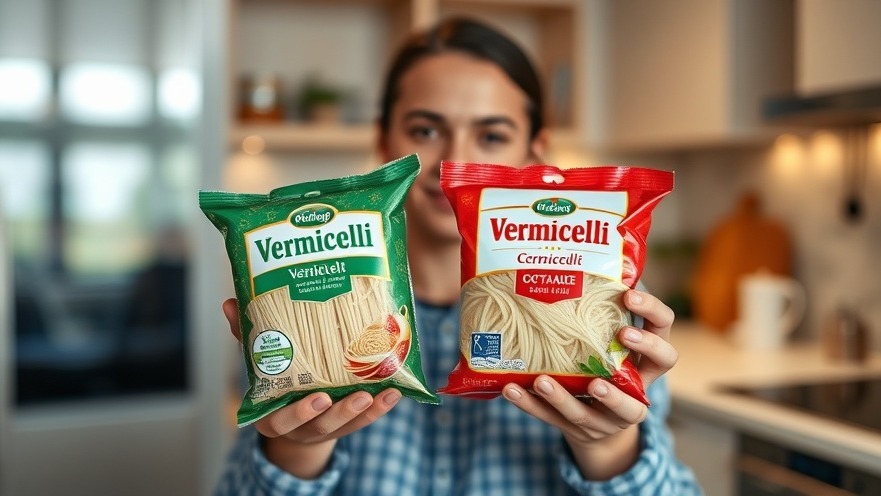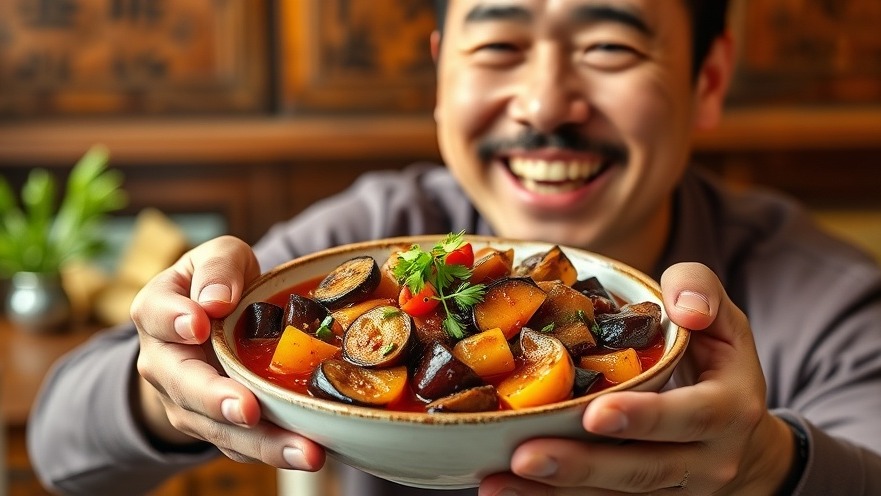
Understanding Vermicelli: A Staple in Global Cuisine
Vermicelli is a type of pasta that is often used throughout the world, renowned for its thin, delicate strands. This noodle is particularly popular in Asian cuisines, where it serves as both a vehicle for flavorful sauces and a base for delightful dishes. In contrast, another noodle type also called vermicelli exists in Italy, where it is prepared differently despite sharing a name. Exploring the differences between these two styles reveals much about cultural cuisines and cooking methods.
In 'Vermicelli vs. Vermicelli,' the discussion dives into the different types of vermicelli noodles, exploring key insights that sparked deeper analysis on our end.
The Asian Vermicelli: More Than Just Noodles
In many Asian countries, vermicelli is made from rice or mung bean starch, making it naturally gluten-free and suitable for a variety of dietary needs. It is often used in soups and stir-fries or as a filling in spring rolls. The versatility of these noodles allows them to absorb flavors well, making them a favorite in dishes like pho and pad thai. Understanding the nutritional aspect of rice vermicelli also highlights its low calorie count, making it a popular choice for anyone looking to enjoy a hearty meal without feeling weighed down.
Italian Vermicelli: A Culinary Tradition
Though not as widely recognized as its Asian counterpart, Italian vermicelli is a staple in Italian cuisine, traditionally crafted from wheat and served in a variety of pasta dishes. Its slightly thicker texture offers a different mouthfeel and is typically cooked al dente. Italian vermicelli often comes to life in tomato or oil-based sauces, showcasing its flexibility beyond being just another noodle. For many, the experience of Italian pasta embodies comfort food, pairing well with fresh ingredients and rich flavors.
How These Noodles Fit Into a Healthy Lifestyle
With the rise of conscious eating, understanding the nutritional profiles of different types of pasta can impact one’s dietary choices. Asian vermicelli, being largely gluten-free and low in calories, is a great option for those who are seeking alternatives to traditional pasta, especially in light of today’s gluten sensitivities. Mixing vermicelli with fresh vegetables and lean protein can create a balanced meal that is both satisfying and nutrient-rich.
Incorporating Vermicelli into Your Diet
If you’re looking to dive into the world of vermicelli, there are plenty of creative ways to incorporate them into your meals. For a quick weeknight dish, you can stir-fry vermicelli with your favorite vegetables and protein, tossing everything together with soy sauce for a delightful blend of flavors. Alternatively, consider adding it to broth-based soups for a delicious, heartwarming meal enjoyed even on cooler days. The adaptability of vermicelli not only allows for a variety of culinary exploration but also enables healthier dining options, appealing to anyone who values their well-being.
Conclusion and Benefits of Exploring Different Noodles
As we’ve explored the differences between the two types of vermicelli, it's clear that both offer unique advantages and flavors that can enhance our meals. Understanding these nuances not only enriches our culinary knowledge but also allows us to make healthier choices in our diets. The next time you’re faced with a choice of noodles, consider vermicelli for its diverse applications and health advantages. Dive into your next culinary adventure with a bowl of vermicelli and experience the delightful flavors from both traditional and modern cooking.
 Add Row
Add Row  Add
Add 




Write A Comment